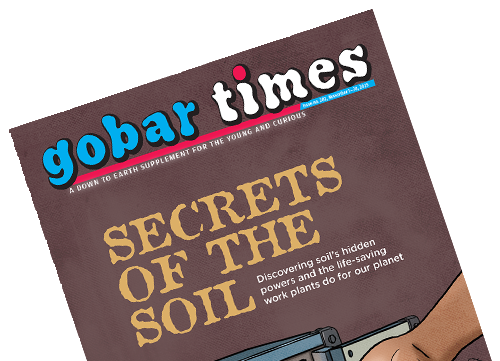
An exhibition of innovative ideas, offering solutions in the sphere of climate change, hosted on 30 January 2024 at the India Habitat Centre, New Delhi. ************ As part of the Green Schools Carnival 2024, the Green Schools Programme (GSP) of the Centre for Science and Environment (CSE) hosted The Solutions Showcase...

All about cracking the climate code with the Annual Climate Change Quiz in the Carnival’24. ******************* Young climate warriors from different parts of the country battled it out for the coveted title of the ultimate Climate Champions in The Bout — Green School’s Programme (GSP) annual climate quiz for schools. Organised as a signature event of the Green Schools Programme Carnival & Awards Ceremony at the India Habitat Centre on 30 January 2024, the second edition of The Bout was double the fun and double the adrenaline! Over 35 school teams, consisting students from Grades 6 to 10, participated …
_4-thumbnail.jpg)
Recapitulating the prestigious Green Schools Awards and felicitating the inspiring contribution of all the awardees. *************************************************************************************** The much awaited and eagerly anticipated Green Schools Carnival of the Centre for Science and Environment (CSE), New Delhi was back on 30th January 2024. Against the backdrop of climate change and environmental degradation, the Carnival underscored the vital role of children and educators in championing sustainability-based initiatives...

The Mission and the Mangoes is a work of fiction that sets its premise around a dystopic, water-starved Earth where unrestrained mining, drilling and the exhaustion of earth’s resources is rendering the planet unlivable. The young author of the book, 12-year-old Hena Parveen, tries to marry a futuristic setting where technological advancements such as humanoid robots and regular space exploration are a reality, with the Earth’s ecosystem that is hurtling towards an inevitable collapse. Interestingly, all this does not take place in a far-fetched future...

Flood, drought, rainfall, snowfall, heatwave, cold wave, storm, cyclone, cloudburst, forest fire… You name it, we have it! But the biggest question is how and why? ************************************* The modern life we have created is good for us but not for the environment. This energy-hungry human lifestyle is heating up the world at a rate that is not sustainable for the planet. In the past 170 years or so, industries have flourished and have made the Earth hotter by over 1oC. India, for instance...

In summers this year, some European rivers had dried substantially, causing drought in many parts of the region. It revealed to their surface, some ancient stones with intricate engravings on them. Their markings used to indicate the water-level of these rivers, which served as a common forecasting tool for famines. Such stones were called hunger stones. One such is disclosed at the banks of the Elbe River. Dated to 1616 AD, its rock is etched with a warning in German...

When we think of Antarctica, long swathes of ice come into mind. But, could you ever imagine plants flowering in the Antarctic region? The pristine Antarctic ecosystem is being overturned by the climate crisis, according to a new study published in the journal Current Biology. It studied Signy Island, part of the South Orkney Islands of Antarctica. As the summers in the region are warming, two flowering plants have been multiplying fast...

How often does an older relative strike a conversation with you that begins with ‘back in our days...’? And how often do you switch off after hearing this apparently insipid conversation starter? If you do it often, then hang on! We have some news for you. These stories of the past from your elders, particularly about the environment, can provide a lot of crucial information and insights to you…

On July 1, 2021, Delhi experienced a heatwave, when the maximum temperature rose to 43.5°C. At the same time, Ganganagar, in west Rajasthan, reported India's highest temperature of 44.5°C. Some pockets of Punjab, Haryana, Chandigarh, Delhi, north Rajasthan and west Uttar Pradesh still continue to face heatwave conditions. This issue is now prevalent world over. But the world is not only getting hotter but also wetter or more humid.

